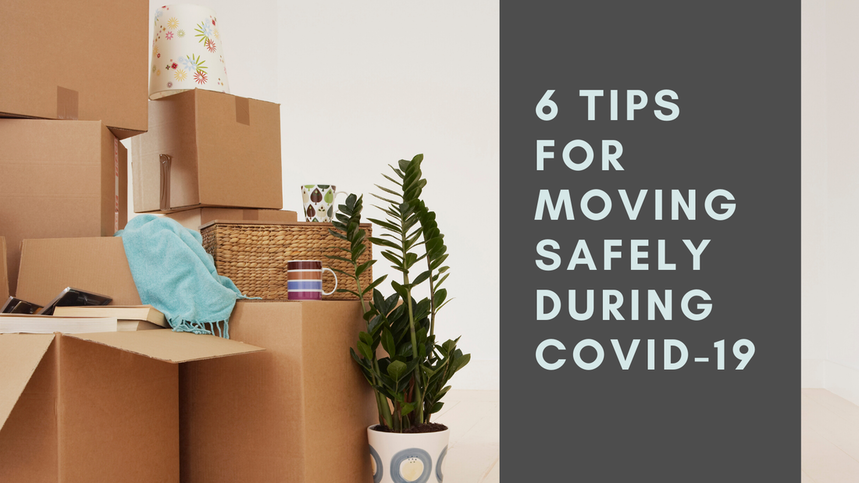|
Selling your home is a big step. How do you know you’re ready to sell your home? Here are 8 signs that you’re in a good position to sell your current home and buy a new one.
1. You have positive equity in your home
Equity is the difference between what your house is worth and what you owe on your mortgage. So if your house is worth $300,000 and you owe $200,000, then you have $100,000 of positive equity. Most homeowners have positive equity in their homes, but it’s possible to have negative equity if your home is now worth less than what you paid for it. How much equity do you need to sell your home? Unless you have to do so to avoid foreclosure, don’t sell your home unless you can sell it for more than you bought it for. In terms of what you need to buy a new home, it’s best to have enough money from the sale of your current home to make a 20% down payment on a new home and to be able to pay for closing costs and moving expenses.
2. You’re free from debt outside of your mortgage
The best case scenario for buying a new home is that you are financially secure, with no debt outside your mortgage and enough cash in an emergency fund for at least 3 months of expenses. However, it is possible to carry some debt outside your mortgage and still be approved for a loan for a new home. Lenders will look at your DTI, or debt to income ratio to decide if you’re eligible for a loan. A favorable DTI is less than 43%. To figure out your DTI, add up all your monthly debt and divide it by your monthly income. For example, if your monthly debt is $500 and your income is $3,000, then your DTI is 16%.
5. You have cash for home improvements
In order to get the most out of the sale of your current home, it may be necessary to make some upgrades. Typically, the best places to invest money are in paint jobs, the exterior of the house, and upgrades to the kitchen and bathrooms. Home improvements aren’t a must-have, but having the cash on hand to update your home and maximize its value is a good sign you’re ready to sell.
6. You're emotionally ready to sell
While you may be in good financial shape to sell your home, it’s also important to assess whether or not you are emotionally ready. Can you handle the criticism of your home that potential buyers may make without taking it personally? Are you ready to let go of the memories that you created in your home? Are you prepared to put in the work to get your home ready for the market and keep it ready to show for weeks or months? These are some of the questions you will need to answer in order to determine if you’re emotionally ready to sell.
7. Your current home no longer fits your needs
Whether you need more space to accommodate new family members or you’re ready to downsize, it’s important to assess whether your current home fits your needs. Changes in your family size or lifestyle indicate that you’re ready to sell.
8. You’re in a sellers market.
Do some research and find out the state of your local market. If you're in a seller’s market, meaning that demand for homes is greater than the number of homes available, it’s a good time for you to sell. In a seller’s market you’re likely to get multiple offers on your home that are competitive and you’ll be able to make money off the sale of your home, which is always the outcome you want as a seller.
In summary, to determine if you’re ready to sell your home, you’ll want to take stock of your financial situation, your emotional situation, and the state of the local market. If these three factors are all working in your favor, it’s a sure sign that you’re ready to make the move of selling your home.
6 Comments
Although the Covid-19 pandemic has forced most of us to shelter-in-place, some of us may find it necessary to move to a new shelter. A move could be something that’s been in the works for months, or something that’s come up unexpectedly. If you find yourself in either scenario, don’t worry. There is plenty of good advice available to make your move more doable, even under trying circumstances.
First, if you are at a high risk of illness due of Covid-19, consider postponing your move. According to Coronavirus.gov, those who are over 65, those who have pre-existing medical conditions, and those who live in nursing homes or long-term care facilities are at greater risk of developing severe illness if they contract the coronavirus. If you find it necessary to move now, whether you are in the high-risk population or not, be sure to read the following tips to make your move as safe and low-stress as possible. Moving services have been deemed essential by the federal government, so moving professionals are still operating in all states. This includes movers, storage facilities, and rental truck companies. The following tips are applicable whether you choose to employ professional services for your move, or take a D.I.Y. approach. 1. Research Before You MoveDetermine If You Are Allowed to Move
Moving is considered “essential” by the federal government, however, some localities may have temporarily restricted moving because of Covid-19. For example, some buildings in NYC do not permit moving because of the shelter-in-place order. Check with your local and state government before you plan to move to make sure there are no restrictions in your case. If you are part of an HOA or condo board, also check with them to see if there are any temporary restrictions on moving.
Research Moving Services
Conduct research into all the different services you are planning to use during your move.
If you want to hire a moving company, interview them about their sanitary practices, how they clean and disinfect their equipment, and how they determine that their workers are in good health. Find out what kind of protective gear the company uses, like masks, gloves, and booties. Check to see if they have a cancellation policy in case you need to change plans last minute. Usually, contracts with moving companies are non-binding, so you have a window of time in which you can cancel the move without having to pay for it. If you are going to use a storage facility, call ahead to see what their current hours and policies are due to Covid-19. Storage facilities may have made changes to their operation such as limited hours of access or a limit to the number of customers allowed in the storage facility at one time. You will also want to make sure the company you use is sanitizing their storage units and common areas properly. Similarly, if you are going to rent a truck or trailer, find out about current company policies on operations and sanitation. 2. Plan the Timing of Your MoveStrategically Space Packing and Unpacking
Now more than ever it’s important to make a detailed plan of the timing of your move, to avoid any possible contamination of your belongings. First, because Covid-19 can last up to 24 hours on cardboard boxes and other surfaces, it’s best to pack everything up, and then wait 24 hours before you begin the moving process. Even if everyone wears gloves and masks, it’s better to take this extra precaution to protect your moving team.Then, you should wait 72 hours from the time your belongings are moved to your new home until the time you actually start living in the space. This way you can ensure that there is much less of a chance that a virus will survive on any of the surfaces.
If you are not able to postpone occupying your new home, be strategic in the way you unpack. Pack one box that you will open first, containing all your cleaning supplies and any essential items for the first few days, then keep it separate from the other boxes and let them sit for 72 hours. Take the time to clean and disinfect your new home before unpacking everything. Then, as you unpack, disinfect furniture, boxes, and anything else that was touched by your moving team before using it. Plan Well in Advance for Setting Up Services
At this time, it’s likely to be harder to schedule an appointment with a technician to set up cable or internet services. It’s best to start looking for a technician well in advance so you can get an appointment at the time you need one.
3. Keep Open Communication With Others
Maintaining open communication with everyone who will be affected by your move is key to a smooth moving process. Tell your neighbors about your move and include specific details about the date and time of your move so they can maintain social distancing during your move. Ask neighbors if the timing of your move will be ok or if it could be problematic for them.
If you are working with a moving company, confirm your reservation and talk about how you will use safety precautions during the move. If you need to cancel the move, contact your moving company or anyone else who will be affected, immediately. If you rent, communicate with your landlord about how to return your keys and pick up your security deposit with proper social distancing. Also talk to your new landlord about how you can move in safely. 4.Take Sensible Safety PrecautionsReduce Personal Contact
Do as much planning as possible by phone or email, this includes scheduling the move and getting quotes from any professional services for the move. Many larger moving companies are already equipped to perform contactless moving. They can do virtual surveys using video chat technology instead of in-home surveys to give an accurate quote for the move. Video chat technology is also used by the crew during the move, allowing the customer to be away from the home while the move is taking place. For example, Bellhops, a national moving company, uses Facetime to communicate with customers remotely while they perform their moving services.
If you have friends or family helping you move, keep your moving crew as small as possible. If you need a lot of help, consider having helpers come in staggered shifts. Assign one person to manage the moving process and make sure all safety measures are followed and safe social distance is maintained. Don’t shake hands with any one or hug to show appreciation to those helping you move. An alternative is to give a tip to show appreciation, there are now many virtual ways to pay for services, like Venmo or Paypal. For friends and family, consider gift cards instead of hosting a meal or party. Be Prepared For Cleaning and Sanitizing
Before the move, stock up on items you’ll need for cleaning and sanitation purposes. Make a list of everything you need and try to get it in one trip to the store. Be sure to have masks, gloves, and booties for everyone helping with the move. If you are working with professional movers, find out if these are supplied by the company, or if you will need to supply them. Also purchase enough hand sanitizer, antibacterial soap, disinfectant spray or wipe, and paper towels for everyone helping to use.
Use Clean Boxes
It is safer to do your own packing in order to minimize contact with others. Since Covid-19 can live on cardboard surfaces for up to 24 hours, you should get new boxes or use boxes you already have at home. Do not collect used cardboard boxes from elsewhere. Cardboard boxes are preferable to plastic bins because the coronavirus can live for up to 3 days on plastic surfaces.
Clean and Sanitize as You Go
Before your move, sanitize items as you pack them. You can use a commercial sanitizing product, or make your own by mixing one tablespoon of bleach to one gallon of water.
During your move, make sure there are soap and paper towels by sinks and hand sanitizers by the door. Before and after the move out, use disinfectant on any surface or object that is touched often, such as door knobs and handles. Clean and disinfect the common areas in your home. You will also want to do the same in your new home after the movers leave. In an apartment or condo building, be sure to disinfect commonly touched surfaces, such as elevator buttons. 5. Consider Making Donations
Rather than moving all the non-perishable food you’ve accumulated, consider donating it during this time of increased need for many people. Even before the pandemic began, about 40 million Americans struggled to pay for groceries. Covid-19 has caused closures of schools and soup kitchens as well as massive layoffs, meaning that more people than ever are in need of food.
You can donate to a local food bank or to Move for Hunger, an organization that makes it easy to donate extra food when moving. Also consider donating household items. Call around to different charities in your area to see if they are accepting donations at this time. Some charities are still in operation and open to receiving donations. 6. Postpone Your Move if Anyone Gets Sick
If anyone in your household comes down with an illness or shows symptoms related to Covid-19, it’s best to postpone the move until a health professional gives you the green light.
Make sure to communicate with your moving company about their cancellation policy. Under the circumstances, it’s reasonable to expect most companies to be flexible and not charge anything for cancellation due to illness. Web Resources
As you plan your move, it’s a good idea to check out online resources that will keep you updated on health and safety guidelines. The following resources may be helpful:
Sources
https://www.moving.org/guidance-for-consumers-moving-during-the-coronavirus-outbreak/ https://www.realtor.com/advice/move/how-to-move-safely-during-coronavirus/ https://www.zillow.com/blog/5-tips-for-moving-during-covid-19-231657/ https://www.moving.com/tips/moving-during-coronavirus-epidemic-heres-what-you-need-to-know/ https://www.forbes.com/sites/taramastroeni/2020/04/15/how-to-move-during-coronavirus-5-tips-for-moving-safely-during-the-pandemic/#3e9edb9a3393 1. Hire a Professional
While it’s great to be handy around the house, it’s important to assess the potential risks of taking on a project before you take the DIY approach. When in doubt, hire a professional. Two situations where this is particularly true are plumbing issues and tree removal. In both cases, the potential damage to your property is just not worth the risk.
2. Research and Get Multiple Bids
In the event that you decide to hire a professional for a project or repair, make sure to get multiple bids before you decide which service to go with. Prices can vary a lot, but remember that the lowest price is not necessarily the best option. Try to get recommendations from friends or check a service like Angie’s List.
3. Don’t Drill Random Holes
Artwork, shelves, and other items hung on the walls are part of what makes a home your own. But be cautious about where you drill holes. The walls of your home contain wires and cables as well as plumbing pipes and ductwork. A stud sensor can locate cables, studs, and ducts. It’s a battery-operated tool that costs about $25, making it a worthwhile investment for any homeowner. Some additional rules of thumb for drilling holes- avoid drilling holes that are deeper than 1 ¼ inches and avoid areas that are 8 inches to 2 feet from the floor, as they are full of wires. Also avoid the spaces that are directly above or below wall switches.
4. Find the Main Water Shutoff Valve
A burst or broken plumbing pipe can be a major disaster for your home. In the event of such an emergency, you will need to act quickly to prevent extensive water damage to your home. Water damage is a very common problem for homeowners, so every homeowner should know the location of the main water shutoff valve. It can be found where a water main comes into your home. It’s worthwhile to make sure everyone in your home knows where to find it and how to turn it off. If the valve is difficult to operate, use some penetrating oil on it to make it work more smoothly.
5. Call 811 Before Digging a Hole
When warm weather hits, resist the urge to start digging up your new yard to plant flowers. Before you dig any holes in your yard, be sure to call 811, the national dig-safely hotline. The hotline is a free service that will get in touch with all your utility providers, who will come to inspect your yard and locate underground pipes, wires, and cables. Once these items are safely identified and marked, you can be sure that you won’t cause any problems with your gardening ambitions. In some states, it’s the law that you must call 811 before digging on your property, so it’s definitely the best way to go.
6. Check the Slope of Your Foundation Soil
Water from rain and melting snow can saturate the soil surrounding your foundation. As the pressure builds up over time, it can cause leaks and even crack your foundation, which results in the need for extensive repairs. You can prevent this from happening by making sure that the ground around your foundation slopes downward from your home about 6 inches over 10 feet of ground. Another way to avoid damage to the foundation is to ensure that your downspouts take water about 5 feet away from your home.
7. Know Your Attic
First, make sure you know the location of your attic. Most attics are accessed by a ceiling hatch, which is usually a square or rectangle area with molding around it, located in the ceiling of a hallway or closet. The hatch can be pushed straight up, and you can access the attic with a ladder. Second, you’ll want to make sure your attic has adequate insulation. Measure your insulation to make sure it’s deep enough. Typically, the recommended insulation is R-38, or about 10 to 14 inches deep. You’ll want your hatch to be insulated as well. If it isn’t already, you can use a 4-inch-thick foam board glued onto it.
8. Replace Your Filters
Filters in your AC and furnace need to be replaced on a regular basis. It’s best to check what the manufacturer recommends to know how often they need to be replaced. Also be sure that you use the right size filter when you buy replacements.
9. Check Smoke Detectors
Test your smoke and carbon monoxide detectors regularly to make sure that they work properly. These detectors can actually save your life, so it’s of utmost importance for homeowners to check them regularly. Even though some models will sound an alarm when the battery is low, it’s best to make a habit of testing them yourself on a regular basis.
10. Get an Annual HVAC Inspection
Be sure to have an air conditioning maintenance appointment once a year. This way you will be able to make sure that your cooling and heating systems are functioning well and at ultimate efficiency, which will save you money on heating and cooling in the long run.
Sources: https://www.houselogic.com/organize-maintain/diy-repair/what-new-homeowners-need-to-know/?site_ref=mosaic http://www.homeadvisorhomesource.com/10-biggest-mistakes-homeowners-make/ https://www.brashearsinsurance.com/5-costly-common-mistakes-homeowners-make/ Moving into a new home is an exciting time, and you’re probably daydreaming about decor and paint schemes and new furniture. But before you get into the fun stuff, there are some basics you should cover first.
Change the locks Even if you’re promised that new locks have been installed in your home, you can never be too careful. It’s worth the money to have the peace of mind that comes with knowing that no one else has the keys to your home. Changing the locks can be a DIY project, or you can call in a locksmith for a little extra money. Paint and Renovate If you are planning on painting and/or doing other renovations, line up the contractors for right after closing. Not having your items in the house will make the process go smoother for the contractors. Steam clean the carpets It’s good to get a fresh start with your floors before you start decorating. The previous owners may have had pets, young children, or just some plain old clumsiness. Take the time to steam clean the carpets so that your floors are free of stains and allergens. It’s pretty easy and affordable to rent a steam cleaner—your local grocery store may have them available. Call an exterminator Prior to move-in, you probably haven’t spent enough time in the house to get a view of any pests that may be lurking. Call an exterminator to take care of any mice, insects, and other critters that may be hiding in your home. Clean out the kitchen If the previous occupants wanted to skip on some of their cleaning duties when they moved out, the kitchen is where they probably cut corners. Wipe down the inside of cabinets, clean out the refrigerator, clean the oven, and clean in the nooks and crannies underneath the appliances. |
Categories
All
|

Email - Click Here
Phone - 540-246-9067 Website - www.mattiasclymer.com Schedule a Meeting, Download Contact Card, Etc... |
Funkhouser Real Estate Group | 401 University Boulevard, Harrisonburg, VA 22801 | 540-434-2400 | ©2021 | Privacy Policy | All rights reserved.
Licensed in the Commonwealth of Virginia





 RSS Feed
RSS Feed
